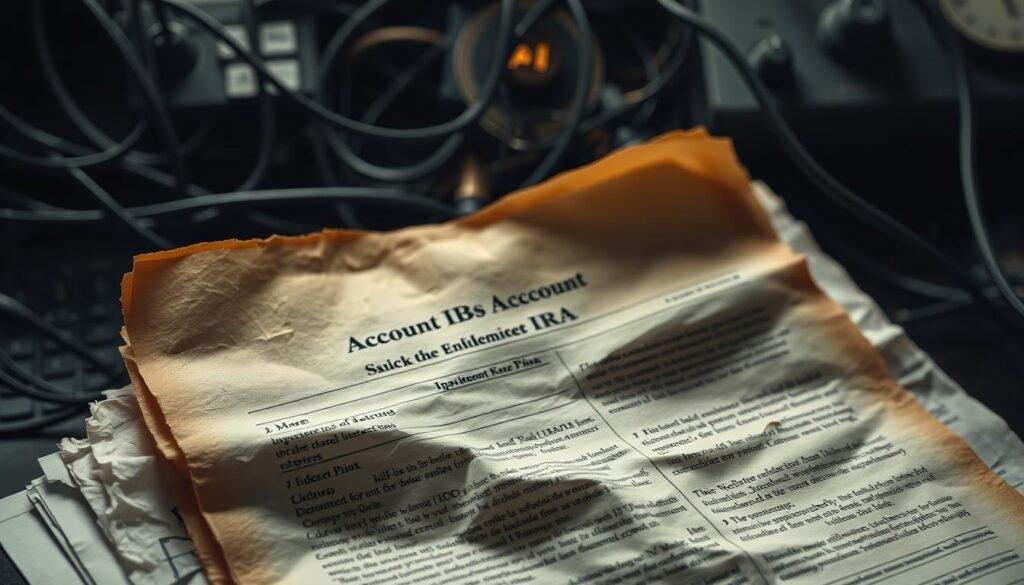Surprising fact: in 2025, typical one-time setup charges plus ongoing service and storage add up so most holders pay between $200 and $600 per year in ongoing costs, before dealer markups.
This guide explains what to expect pay, why charges exist, and how choosing the lowest-cost custodians can protect retirement savings over time.
Custodians and IRS-approved vaults bring unique storage and administration costs that standard accounts do not. Typical line items include setup fees ($50–$150), annual maintenance ($75–$300), storage or vault charges ($100–$300 or 0.5%–1% of holdings), and transaction costs ($25–$50).
Dealer markups on metals often add 2%–5% above spot and can rival other costs, so product selection matters as much as custodian pricing. Flat-rate versus scaled fee models change outcomes as funds grow.
We’ll compare real custodians, flag hidden charges like shipping and insurance, and show steps to cut costs without sacrificing security. Take a long-term view: the right fee structure helps more of your savings compound for retirement.
Key Takeaways
- Expect setup and annual service costs plus storage and transaction charges when holding physical metals.
- All-in ongoing costs often land between $200 and $600 per year before dealer markups.
- Flat-rate vs scaled pricing affects long-term outcomes as accounts grow.
- Dealer markups on bullion or collectibles can exceed custodian charges.
- Review the full fee schedule — low advertised rates can hide shipping or insurance costs.
- Choose custodians that use IRS-approved vaults to balance cost and security.
Understanding Today’s Gold IRA Cost Landscape and Why Fees Matter
When you move retirement dollars into tangible bullion, new recurring charges appear that shape long-term returns.
Specialized custodians and IRS-approved depositories are required to hold physical metals inside retirement accounts. That need creates clear line items: setup, annual maintenance, secure storage, transaction charges, and dealer markups.
Typical 2025 ranges include $50–$150 to open, $75–$300 yearly admin, $100–$300 for storage (or 0.5%–1% of holdings), $25–$50 per trade, and about 2%–5% dealer markups.
These costs matter because higher ongoing charges reduce compounding over time. Fixed admin and storage bite harder on small accounts, slowing accumulation of assets and lowering value at retirement.
Inflation and market demand have nudged storage charges up, even as some custodians make admin pricing clearer. Remember that physical metals differ from stocks and bonds because of vaulting, insurance, and extra handling.
“Assess the total expense, not just the headline rate — the sum of storage, admin, transactions, and markups decides long-run outcomes.”
Map your account size, expected trades, and preferred metals to a fee model (flat vs. scaled) to pick the option that preserves retirement value. Regulations also ban home storage, so an approved depository is mandatory.
- Compare total annual cost, not just setup or one line item.
- Match fee structure to your time horizon and balance.
- Use the figures above to benchmark providers fairly in the next section.
Gold IRA Fees: The Complete Breakdown for the Present Market
A clear cost breakdown lets investors compare providers and avoid unexpected annual drains on retirement funds.
Setup fees for a self-directed account usually cover application, onboarding, and rollover assistance. Typical one-time setup ranges from $50 to $150. Some custodians waive or discount setup when you bring larger funds.
Annual maintenance and administration costs per year
Annual maintenance commonly runs $75–$300 per year. Providers use either flat fees or scaled tiers. Scaled schedules can climb steeply as assets grow, sometimes reaching several hundred to thousands for large accounts (for example, Equity Trust’s scaled tiers range widely).
Storage fees at IRS-approved depositories (segregated vs commingled)
Storage often costs $100–$300 per year or 0.5%–1% of holdings. Some custodians bill a percent of account value, others set minimums. Segregated storage holds your metals separately and typically costs more than commingled vaulting. Insurance, audits, and transit security are included in many depository charges.
Transaction fees for buying, selling, and transfers
Expect $25–$50 per trade in most cases. Vantage, for instance, lists $95 per purchase or liquidation and shipping minimums around $50. Frequent trades add up quickly and increase annual drag on the account.
Dealer markups above spot and their impact on account value
Dealer markups typically run 2%–5% above spot and can be higher for proofs or collectibles. These premiums reduce resale value and compound with custodian charges to lower net retirement assets over time.
“Compare total annualized cost, not just headline numbers — storage, admin, transactions, and markups together determine long-term value.”
- Tip: Read full schedules — the same vault can be billed differently by separate custodians.
- Billing: Fees hit by annual or quarterly cadence and often on the account anniversary.
- Action: Match product choice and trade frequency to fee structure to keep more funds invested for retirement.
How Gold IRA Costs Compare to Traditional IRAs and Other Retirement Accounts
Retirement accounts that hold physical metals add operational steps that standard brokerage accounts do not require.
Why physical metals add storage and handling costs not found in standard IRAs
Brokerage or Roth accounts typically charge little for custody; investors mostly pay mutual fund expense ratios or trading commissions.
By contrast, metal-based retirement accounts require specialized custody, secure depository storage, transit handling, and insurance. Those extras create recurring storage and maintenance line items that paper assets like stocks and bonds avoid.
Flat-rate vs scaled/percentage fee models as balances grow
Flat annual fees are predictable and easy to budget. They help small accounts avoid surprise charges per year.
Scaled or percentage-based fees rise with assets. A modest percent can seem cheap on paper but may exceed a flat option as balances grow into larger sums.
- Compare the core fee stack: custody, insured storage, and handling vs brokerage-only costs.
- Understand that storage and insurance add true per-year expense not found in paper-only accounts.
- Match fee model to expected account size — scaled fees can surpass flat fees on large assets.
“Choose the model that fits your balance and trading plan — predictability saves money for many long-term savers.”
For an apples-to-apples comparison and the latest baseline numbers, consult the 2025 fee guide.
Hidden Costs and Red Flags That Can Erode Retirement Savings
A low headline rate can mask dozens of small charges that add up over years. Watch for add-ons that the custodian or dealer may not highlight at first glance.
Shipping, insurance, and audit charges: Depositories often bill for delivery or liquidation, and some add periodic audit fees. These can appear as separate line items under storage or transit expense.
Routine nickel-and-dime items: Wire transfer charges, paper statement fees, late payment penalties, and minimum-balance penalties are common. Special handling for in-kind transfers can also trigger extra processing costs.

Distribution and liquidation realities: When you take a distribution you may face transaction charges, appraisal or analysis fees, and buyback spreads that reduce proceeds. Early withdrawals before age 59½ can bring a 10% penalty plus tax under IRS regulations.
Dealer markups and tactics: Some dealers push high-markup collectibles that can exceed 20% and harm long-term savings. Avoid high-pressure sales and demand a full, written fee schedule from any custodian or dealer.
“Insist on transparent pricing and factor every possible charge into comparisons to protect retirement value.”
- Confirm account closing or termination fees before funding.
- Ask for written breakdowns of storage, transit, and audit charges.
- Model buyback spreads into your projected returns.
Comparing Custodians and Depositories: What Low-Cost Really Looks Like
Picking a custodian means reading a multi-page price sheet — and small line items add up fast. Focus on how each charge is calculated and when it posts to your account.
Reading a custodian’s schedule
Start line by line: setup, annual record-keeping, storage method (flat vs basis points), transaction charges, shipping, and termination. Ask whether storage is billed on account value or a flat renewal fee.
Choosing an IRS-approved depository
Custodians may use the same vault but bill differently. Confirm whether the depository invoices the custodian or you directly and ask for written breakdowns.
Segregated storage vs commingled storage
Segregated storage provides allocated metals and higher security at a higher cost. Commingled storage lowers storage cost but mixes holdings and may affect resale value.
Vantage example and real numbers
Vantage Precious Metals IRA shows how lines add up: $50 non-refundable setup, $325 annual record-keeping, storage at 0.20% (min $150), $95 per purchase or liquidation, shipping min $50, and termination fees ($250 full/$100 partial). Compare that to Kingdom Trust’s Delaware depository ($125 nonsegregated/$290 segregated) and Madison Trust’s tiered model to see how billing varies.
“Verify both custodian and depository schedules before you fund — total cost of ownership shapes long-term value.”
- Confirm invoicing date (often funding anniversary).
- Ask how storage minimums and trade charges apply.
- Request written depository rates and termination terms.
Practical Ways to Minimize Gold IRA Costs Without Sacrificing Security
A smart fee match means choosing the right billing model for your account size and time horizon.
Start by mapping your balance and plans. Larger accounts often save with a flat annual maintenance model, while smaller accounts may prefer scaled fees early on. Compare billing cadence so you know when charges post.
Favor recognized bullion over collectibles to avoid high markups and resale uncertainty. Lower premiums help preserve savings per year and cut total cost of ownership.

- Limit transactions — gold often performs best as a long-term hedge, and fewer trades reduce per-transaction charges.
- Choose commingled storage if appropriate to lower vault costs while staying in IRS-approved facilities.
- Ask for discounts on setup or transfer when rolling over larger balances; many custodians negotiate to win business.
- Verify maintenance billing and whether fees are debited from the account to plan cash flow and avoid penalties.
“Negotiate upfront and plan around known fee dates to keep more of your retirement savings working for you.”
For deeper tactics and checklists, see this investing guide and a primer on understanding costs.
Putting It All Together: A Simple Cost-Comparison Framework
Create a simple worksheet to see how each provider’s line items add up across different balance sizes. That one step turns headline claims into real numbers you can trust.
Build a side-by-side spreadsheet listing custodian and depository combos. Include setup ($50–$150), annual maintenance ($75–$300 or scaled tiers), storage (flat $100–$300 or 0.5%–1% with minimums), transaction charges ($25–$95+), and extras like shipping, insurance, audit, wire, and termination.
Model per-year totals for small, mid and large accounts. Apply dealer markup assumptions (2%–5%+) and run growth scenarios to see how all-in value shifts over time.
Key modelling steps
- Compare flat vs scaled admin to find the balance where one beats the other.
- Factor billing cadence and per-request charges to estimate real cash flow per year.
- Vary buy/sell frequency to show transaction impact on net asset growth.
- Apply storage minimums and markups to test which structure wins at each balance level.
“Save versions for sensitivity testing — tweak growth, assets mix, and trade frequency to reveal true long-term cost drivers.”
When you finish, the spreadsheet should show expected pay per year and a clear winner for your account size and goals. Use it to negotiate setup discounts or choose a depository that matches your security and budget needs.
Conclusion
, Knowing every charge that touches your account is the first step to keeping more retirement savings compounding.
Count on setup costs around $50–$150, annual admin of $75–$300, and storage of $100–$300 or 0.5%–1% with minimums. Transaction ranges run roughly $25–$95, and dealer markups commonly add 2%–5% or more.
Understand that total costs go beyond simple admin: shipping, insurance, wire and distribution taxes (plus a 10% penalty for early distribution before 59½) can cut value over time. Choose commingled or segregated storage based on budget and security needs.
Match fee models to account size and time horizon, use the comparison framework, and favor low-premium metals and fewer trades to limit drag. This guide’s core message: clarity on costs empowers better choices for gold ira and other iras—balance cost, security, and strategy to protect retirement assets.
FAQ
What typical charges should I expect when opening a self-directed precious metals retirement account?
Expect a one-time setup charge from the custodian, plus an annual administration cost. You’ll also pay storage and handling at an IRS-approved depository, and dealer markups when you buy physical bullion. These combine into the all-in cost that affects your net retirement value.
How do storage options at depositories change my ongoing expense and security?
Segregated storage keeps your bars or rounds separated and typically costs more than commingled storage, where assets are pooled. Segregation adds security and easier verification at audit or distribution, but commingled vaulting usually lowers the yearly storage bill.
Are there recurring admin or maintenance costs per year I should budget for?
Yes. Most custodians charge an annual administration fee that covers recordkeeping, tax reporting, and compliance. Some firms use flat rates; others scale fees by account size. Review the custodian schedule to forecast multi-year costs.
What hidden charges can reduce my retirement savings unexpectedly?
Watch for shipping and insurance on deliveries, wire or paper statement fees, audit or appraisal charges at the depository, and penalties for late payments. Also review liquidation or in-kind transfer fees when you take distributions.
How do dealer markups above spot price affect long-term returns?
Markups increase your entry cost; that spreads the price you must recoup before gains. High markups hurt returns, especially on small purchases. Choosing reputable dealers with transparent spreads and preferring bullion over collectibles helps lower that drag.
Can I minimize costs by choosing certain custodians or depositories?
Yes. Compare fee schedules for setup, annual admin, storage, transaction, and transfer charges. Low-cost custodians often pair with competitively priced IRS-approved depositories. Balance cost savings against reputation and insurance coverage.
How do costs compare between a precious metals retirement account and standard retirement accounts like brokerage IRAs?
Standard IRAs or brokerage accounts typically avoid physical storage and handling charges, so their ongoing costs are often lower. Physical holdings add vaulting, insurance, and handling expenses that don’t exist for paper assets such as stocks, bonds, or mutual funds.
What fee model is better as my balance grows: flat-rate or percentage-based?
For smaller balances a flat-rate annual fee can be more favorable. For larger balances, a percentage model may scale down relative cost. Match the custodian’s billing style to your expected account size and time horizon to minimize long-term expense.
What are reasonable red flags when evaluating custodians or dealers?
Red flags include opaque pricing, unusually high markups, pressure sales tactics, frequent undisclosed fees, and poor reviews about transfers or distributions. Ask for full written fee schedules and insurance details before committing funds.
How can I lower transaction costs when buying or selling physical bullion inside the account?
Limit the number of transactions, buy larger bars or standard bullion products with lower spreads, and time purchases when premiums tighten. Negotiate dealer fees for larger rollovers or consolidated buys.
Should I consider insured shipping and appraisal costs when planning my retirement distribution?
Yes. During distributions, you may incur shipping, insurance, and appraisal expenses. If you request physical delivery, factor these charges and any in-kind transfer fees into your net distribution plan.
What documentation should I review to compare custodian costs properly?
Obtain the custodian’s fee schedule, the depository’s storage and insurance terms, dealer price sheets showing markups, and sample statements that reveal added transactional charges. Build a side-by-side comparison to project per-year totals.
Are there reliable ways to model how fees will impact account value over time?
Yes. Create a simple spreadsheet comparing annual administration, storage, dealer markup assumptions, and expected growth. Run scenarios for conservative, moderate, and optimistic returns to see how costs erode gains.
Do custodians ever waive setup or transfer charges for large rollovers?
Some firms offer discounts or waive setup fees for substantial transfers. Always ask—larger rollovers often provide leverage to reduce upfront or recurring charges, but verify any agreement in writing.

